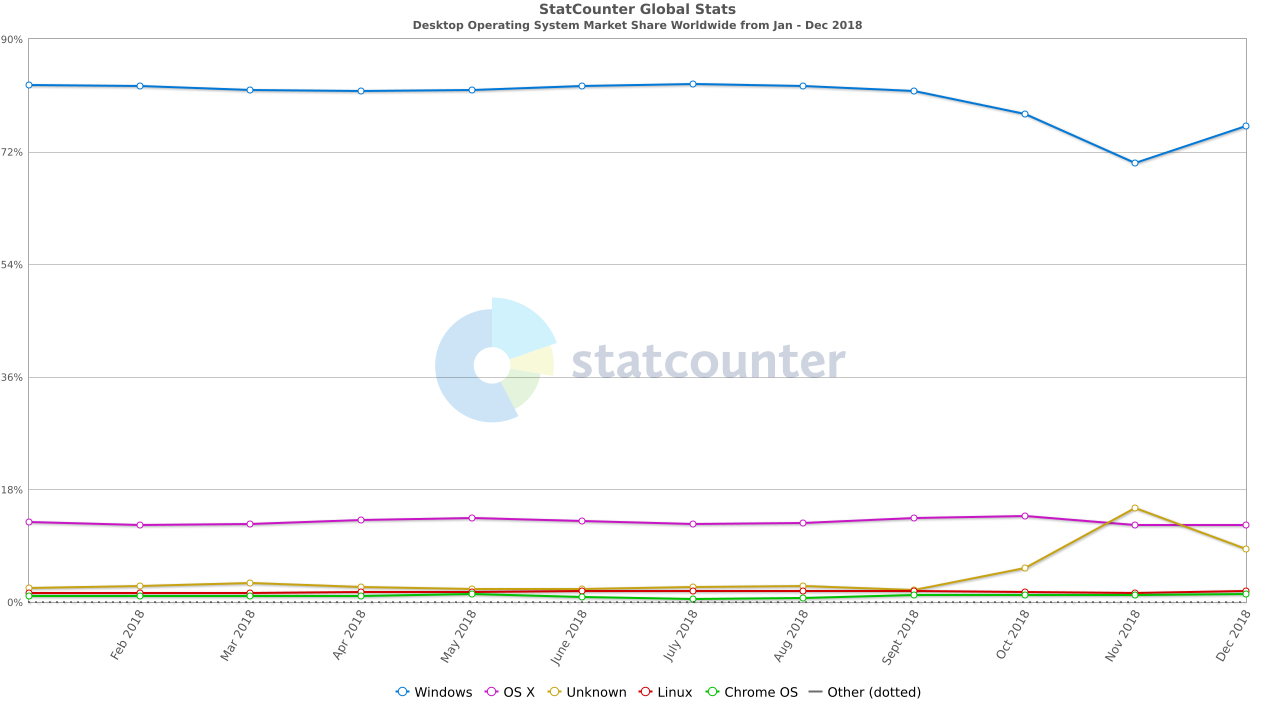
While Linux has several advantages over Apple's Mac and Microsoft's Windows, it has never really gained any traction in PCs. After 30 years on the market, the open-source operating system has achieved 3% of desktop PC OS market share, reports Linuxiac citing StatCounter, marking an all-time high.
Currently, Windows commands 68.15% of the PC market share, MacOS occupies 21.38%, Chrome OS has 4.15%, and Linux is used on 3.08% of PCs. Around 3.24% of all systems run either FreeBSD or an unknown operating system, which are most likely either very new or very old versions of popular OSes.

Based on data from StatCounter, Linux's share doubled from 1.64% in 2018 to around 3% in 2023. On the other hand, MacOS increased its share from 12.33% in 2018 to 21.38% today, whereas the share of Windows dropped from around 82% five years ago to 68.15% today.

But while Linux is barely used on desktop PCs, it dominates servers, supercomputers, edge systems, IoT, and embedded PC markets due to the versatility, security, and open-source nature of the OS, which allows developers to quickly innovate.
But desktops and notebooks do not necessarily benefit from the same things as servers or NAS. Users are way too familiar with Windows and MacOS to switch to Linux, which is why the operating system has remained a distant outsider on the market of consumer PCs. Nonetheless, its market share is slowly growing, though it is hard to make predictions about whether the OS is set to gain any further traction.
Perhaps the popularity of devices like Steam Deck will make Linux more accepted by gamers, and from there, its adoption on desktops and notebooks will grow, too. But for now, Linux remains a niche OS for consumer PCs.







